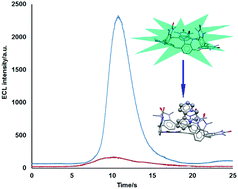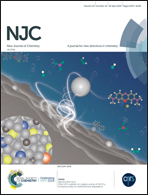Electrochemiluminescence response of a benzouril-constructed electrode to bipyridyl herbicides†
Abstract
Based on the host–guest interactions of paraquat and diquat with benzo[6]uril, an electrochemiluminescence sensor has been developed, and the results exhibited a quenching effect of the guests on the luminescence intensity of benzo[6]uril. The decreased intensity was used for quantitative detection in the concentration range from 1.0 mM to 1.0 μM for paraquat, and 10.0 mM to 1.0 μM for diquat with good recoveries and relative standard deviations. Luminol, a classical luminophore, was employed to achieve competition with the bipyridyl herbicides for interaction with benzo[6]uril, which has also been applied for realizing a quantitative response to the guests.



 Please wait while we load your content...
Please wait while we load your content...